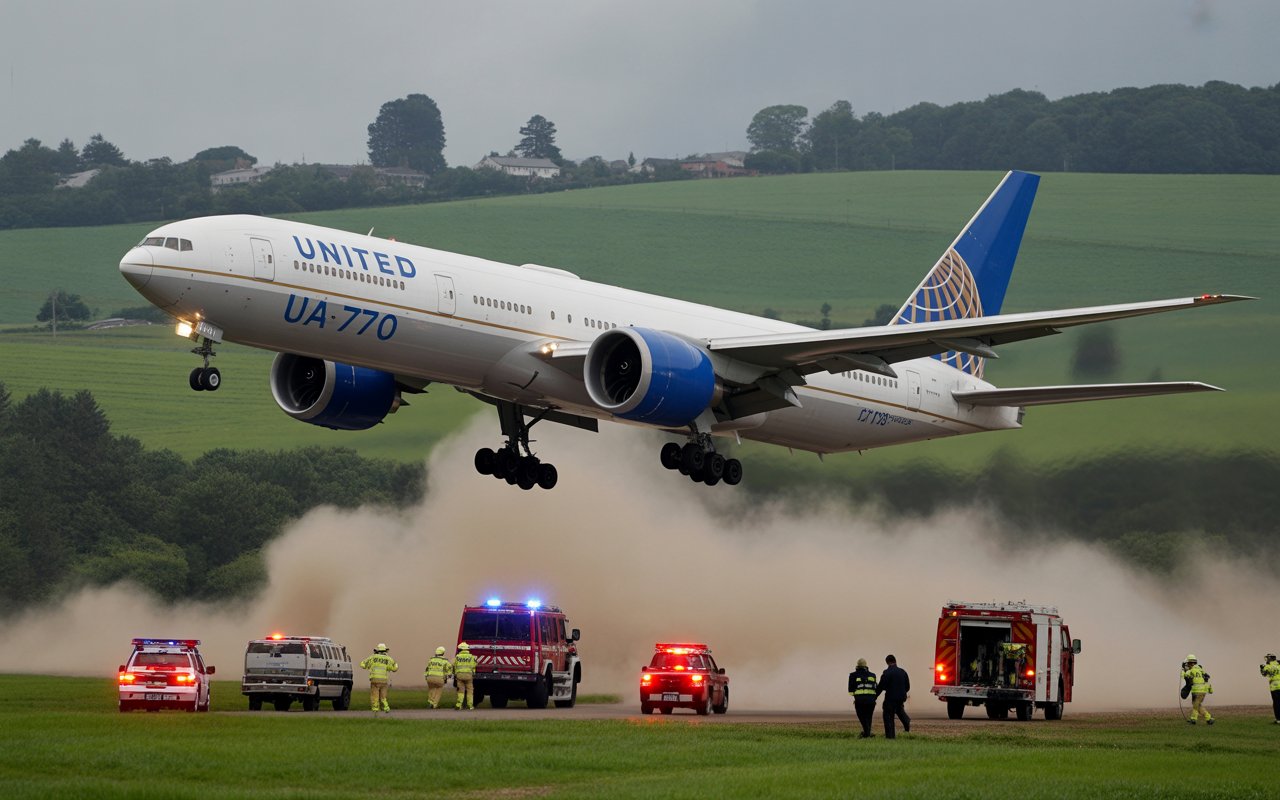On May 27, 2025, United Airlines Flight UA770 encountered an in-flight emergency that dramatically altered its course. The Boeing 787-9, on a routine transatlantic journey from Barcelona to Chicago, issued the universal “squawk 7700” code indicating an emergency. Within minutes, the flight was diverted to London Heathrow Airport. This sudden change in plans created tension among passengers and aviation communities alike, as the unexpected twist underscored the unpredictability of air travel despite meticulous planning.
Why Choose London Heathrow for UA770’s Emergency Diversion
With the squawk code activated, pilots assessed their options and selected Heathrow for its readiness to support wide-body aircraft emergencies. As a major international hub, Heathrow provides extensive technical and logistical support, including emergency services, maintenance teams, and passenger care infrastructure. The proximity to the aircraft’s position over Western Europe made it the safest and most practical choice. The landing was executed smoothly, and the aircraft touched down on runway 27R before being guided to gate B44, where ground crews awaited its arrival.
What Triggered the United Airlines Flight UA770 Emergency Diversion
Early reports suggest that UA770’s diversion was prompted by a technical anomaly—potentially a cabin pressurization issue. While details remain under investigation, indications range from partial pressurization loss to sensor alerts requiring immediate action. The aircraft’s advanced systems, including fly-by-wire controls and real-time health monitoring, alerted the crew, who then made the conscientious decision to divert. Though no injuries were reported, the pilot’s ability to act decisively and follow emergency protocols ensured a safe outcome.
Crew and Passenger Response on UA770
Aboard Flight UA770, cabin crew and pilots executed procedures with calm professionalism. Crew members were noted for their reassuring communication and efficient preparation of the cabin for diversion. Many passengers shared that while there was initial fear, consistent updates from the crew and clear announcements helped maintain a composed atmosphere. Eyewitness accounts described a tense descent and landing, followed by collective relief once the aircraft was on the ground. The overall response emphasized the cabin crew’s training and crisis management skills.
Operational Effects and Passenger Support Following UA770 Diversion
Once on the ground, United Airlines activated its emergency operational protocols. Passengers were assisted with rebooking, accommodations, and meals, especially for those requiring overnight stays or visas to remain in the UK. Technical teams began a thorough inspection of the aircraft before repairs could proceed. United issued a public statement affirming that safety drove the decision, praised the crew’s actions, and reiterated its commitment to passenger welfare throughout the disruption.
Broader Implications from the United Airlines Flight UA770 Emergency Diversion
UA770’s diversion illustrates how modern aviation handles emergencies with precision. It highlights the value of redundant systems, real-time data monitoring, and well-practiced emergency procedures. The incident provides important insight into how transatlantic flights, equipped with advanced diagnostics and flown by trained crews. Can resolve unexpected issues swiftly without compromising safety. It reinforces confidence in aviation protocols and demonstrates that such events, while uncommon, reflect system strengths rather than failures.
Lessons Learned from the United Airlines Flight UA770 Emergency Diversion
This event offers vital lessons: first, diversions are often precautionary and reflect rigorous adherence to safety procedures. Second, transparent and calm communication—from crew to ground staff—can alleviate passenger anxiety. Finally, investing in technology and ongoing training remains essential in maintaining one of the safest industries in the world. For travelers, staying attentive, maintaining composure, and trusting in the systems and crew makes all the difference in emergency scenarios.

